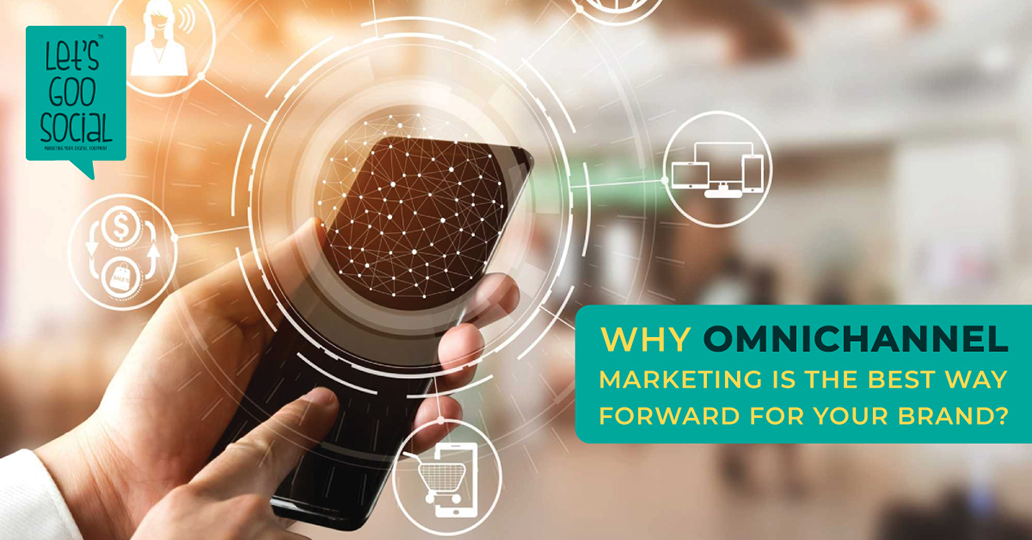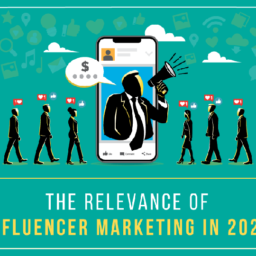
If you are in the marketing sector, you would have definitely heard of Omnichannel marketing. There are different definitions to this depending on the industry. But what is it exactly?
Omnichannel marketing:
Omnichannel marketing is the process of creating one seamless message across all channels based on customer behaviour. This helps in providing them with the ultimate personalised customer experience with the brand or company.
The process uses digital or traditional or both marketing channels to send relevant messages to the customer irrespective of them engaging with the brand or not.
We give you a few ways in which this can happen and to illustrate omnichannel marketing:
- A customer or a user getting a subsequent SMS regarding a promotion and an emailer with the discount coupons in it.
- A user getting an SMS about a particular promotion while in-store shopping for products.
- A customer getting a cart abandonment email or message on messenger, followed by retargeting ads for the abandoned product.
This marketing approach makes the entire process for the customer seamless and provides an integrated shopping experience from start to finish.
Omnichannel marketing is where every channel works in tandem to provide a unanimous message and bounce to the brand or business.
Today’s customers are very smart and are extremely tech-savvy. While interacting with a brand, they bounce between multiple channels and marketers are still trying to figure out this behavior in order to correctly target them. Customers look for trueness and authenticity in a product or company even before purchasing or approaching them. This is where omnichannel marketing comes into play.
It means:
- You are always present wherever the customer is present and no matter which channel they are on.
- It provides you with a deeper level of personalization no matter who your customer is, which channel they are on and wherein the customer journey they are.
- In whichever channel the customer may be, and when they interact with your updates, they get automatic responses according to their needs.
You may think that this is close to multichannel marketing. The answer is no. There are clear differences between multichannel and omnichannel marketing. Let’s look at them below.
The differences between omnichannel and multichannel marketing:
- In multichannel marketing, the messages are random. Omnichannel marketing keeps the messages relevant to the user by updating each channel as and when the customer engages with your brand.
- Multichannel marketing has static messages across various channels where there is no scope for personalization according to the customer’s needs whereas, in omnichannel marketing, this is possible.
- Multichannel marketing puts the brand in the center of the marketing strategy and gives out the same message on different channels.
- The advantages of omnichannel marketing are plenty and put the customer at the center of the marketing strategy. The messages are adaptive across multiple channels.
Here is a great example of omnichannel marketing:
The situation is where a customer subscribes to your emailer and also opts to receive SMS.
- The first message that goes out is a welcome message with the first time discount via SMS and email.
- The customer signs up for notifications, comes and browses the site but doesn’t purchase.
- A retargeting ad is sent and he comes back to the page, adding some products in the cart.
- The customer finishes purchasing and signs up for Messenger updates.
- Their order and shipping confirmation updates are sent via Messenger.
This way, the marketer can bring them back to the desired page from any of the channels, anytime for a repeat purchase.
Omnichannel marketing for businesses:
Today’s customer journey can start and end at any time. They purchase using any device or from any location. Hence it has become compulsory for businesses to provide them with seamless user experience.
According to research, on average, 90% of users switch between three devices per day to complete a particular task. This is why more and more businesses are adopting omnichannel marketing in their strategies to guide customers through their buying journey.
How to get started with omnichannel marketing for your business?
If you are looking to get started, here are a few things to keep in mind and get prepared with.
1. Give importance to the content
Content still remains king after years and years of ruminating the same. Take a clear look at how your set of customers are consuming content. When are they consuming the content? Are your free goodies or offers to entice them? At what point is the user buying journey most valuable to you and are they optimized for the device they are using?
The answers to these questions will form a great guide to kick off your omnichannel marketing strategy. Make sure you are talking the same language across each channel.
2. Know your customer at a personal level
Today, it is important to know your customer at an intimate level. As a marketer, one needs to understand their behavior, where they are coming from and who they are. Use social listening and give importance to customer feedback to see what they think of you at every step. Which channels are used by the user to access your content?
3. Coordination amongst departments inside the company
Omnichannel marketing forces the company to have strong inter-departmental coordination in order to get a successful outcome. Marketing, sales, PR, product development and customer service must operate in tandem.
Running clear tests to see how this restructuring can help in providing a seamless experience to the user is something that one has to experiment and see. Set clear expectations and streamline all communications between the team. This can help you put the customer at the center of your omnichannel marketing strategy.
4. A full-fledged marketing technology stack
Make sure to identify the marketing tools required by the company to succeed. They all have to work together to ease the marketing efforts and up the experience of the user. When different tools are used, it is called a ‘marketing technology stack’. The most used marketing technology stack is:
- Video/web conferencing system
- Marketing automation platform
- Customer relationship management software
- Analytics and data visualization software
- Email service provider
- Print solutions including materials
- Content management system
These tools help you make informed decisions at every step. They form the heart and brains of your entire marketing strategy.
5. Responsive web pages
In today’s fast pace, the customer has no time to pinch and zoom into things. He or she is on multiple devices at different times. To make their experience smooth, we have to adopt responsive web pages in order to keep their interest high. All your web pages must be designed responsively, especially the landing pages which is crucial in collecting the user information.
6. Is omnichannel marketing really worth it?
We give you a few numbers to keep in mind.
- Users who shop across multiple channels have 30% more lifetime value than users who do not do it.
- They spent 4% more time on each shopping occasion online.
- They spent 30% more money after doing research across multiple channels.
These numbers prove that omnichannel marketing is the way forward.
Have we given you enough information to adopt this method for your business? Do you need help with the same? It is time we sit down for a coffee or two and discuss how we can expand your business and turn your leads into customers. We are Let’s Goo Social, a contemporary digital marketing company that uses actionable insights and proven results to help clients see the light. Click on the button below to reach us now!
Happy marketing!


